
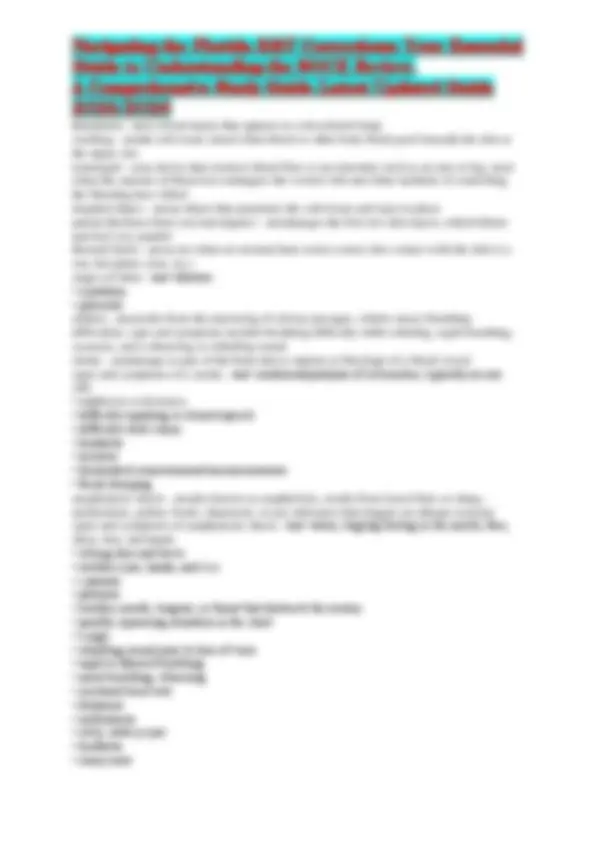
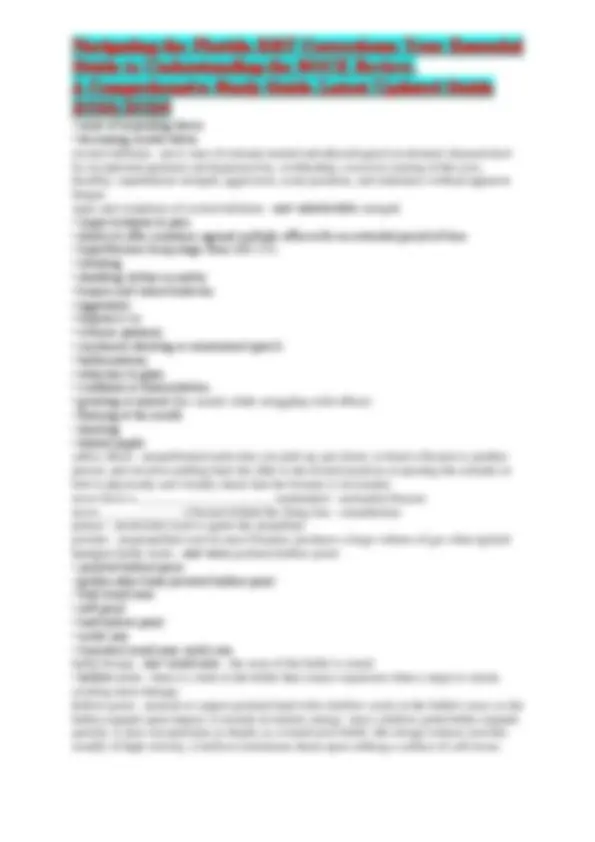
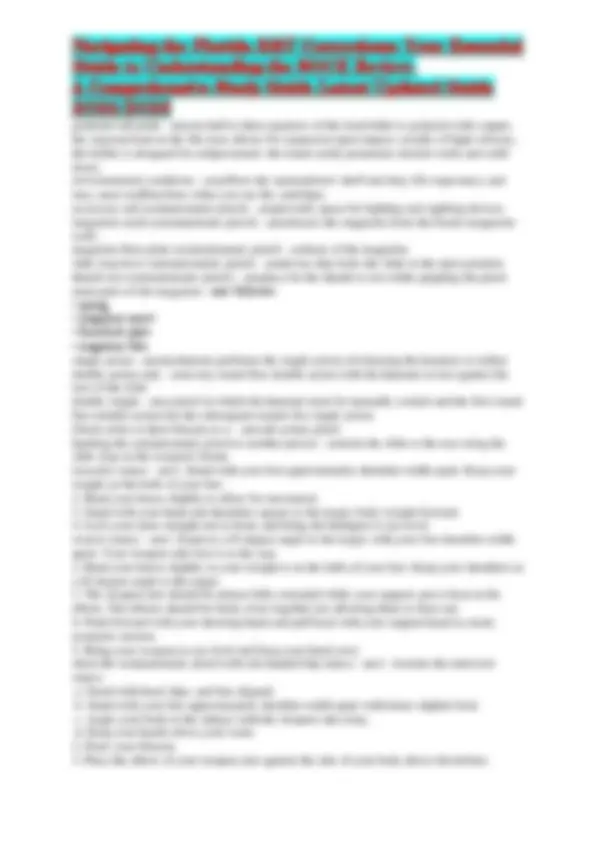

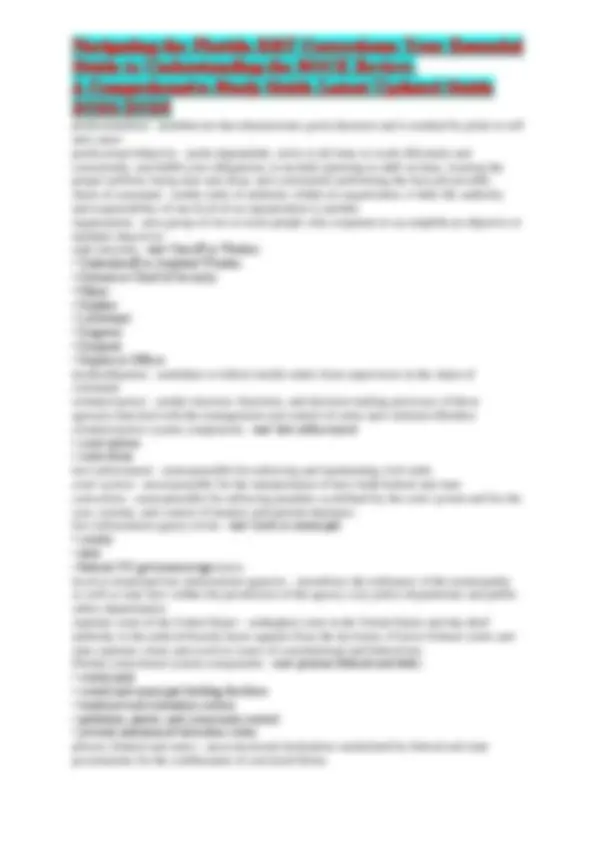
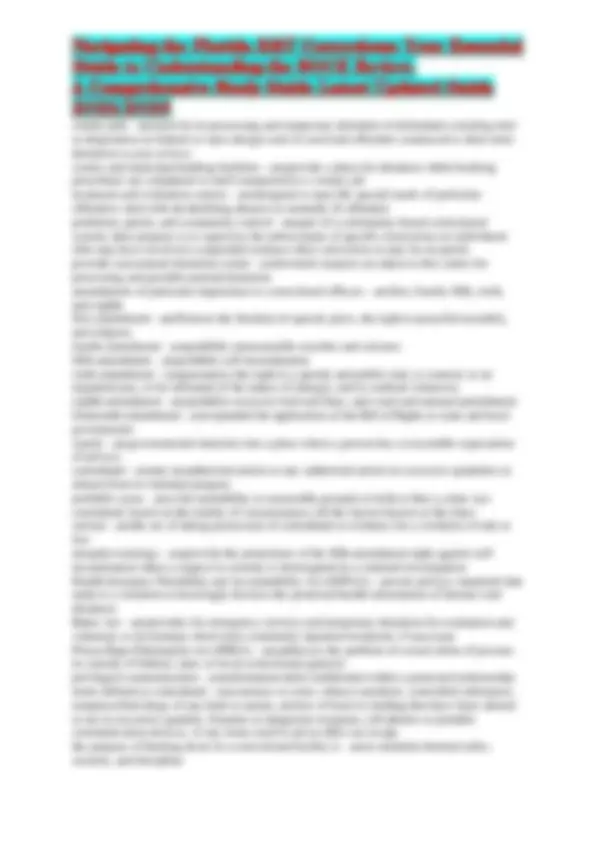
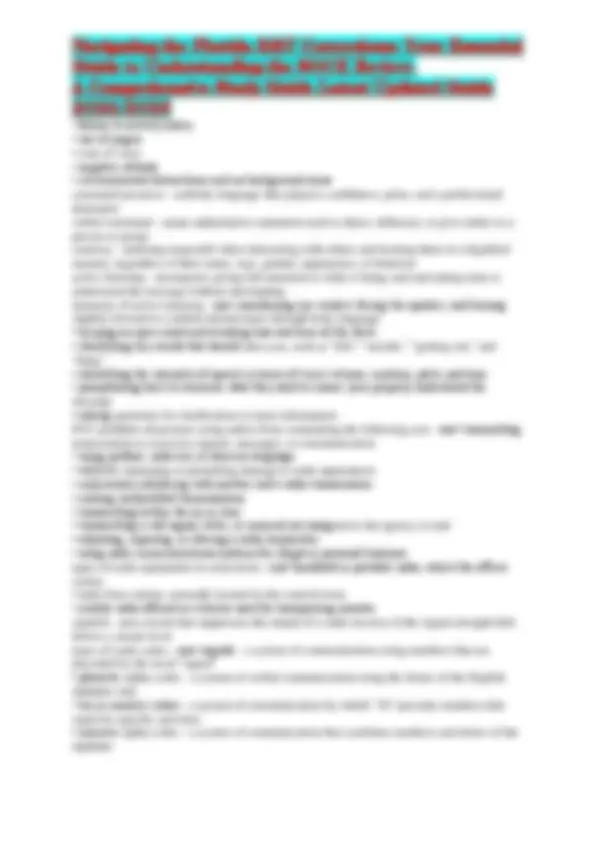
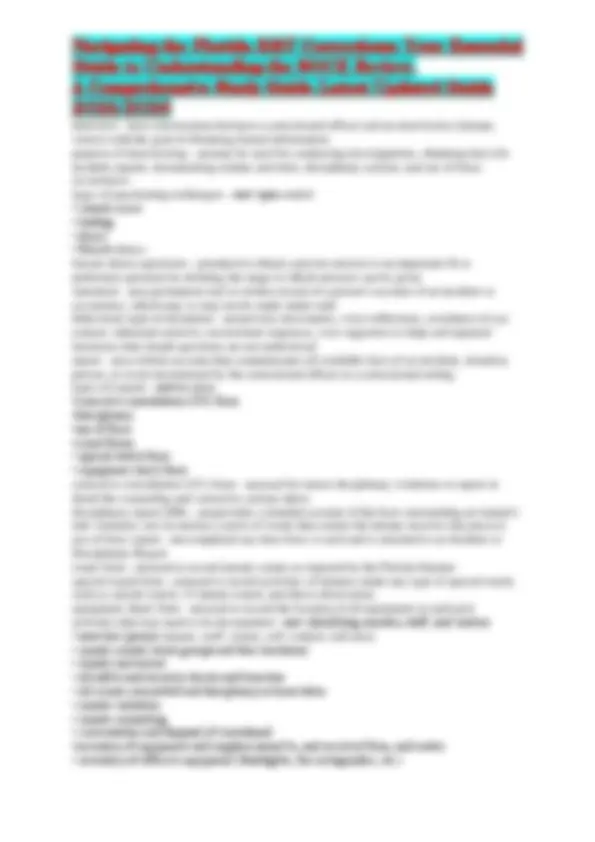
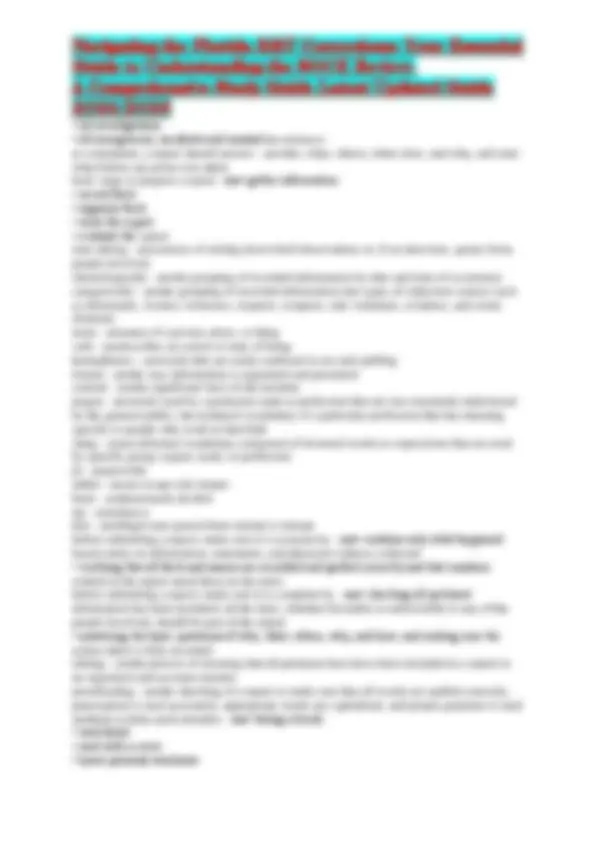
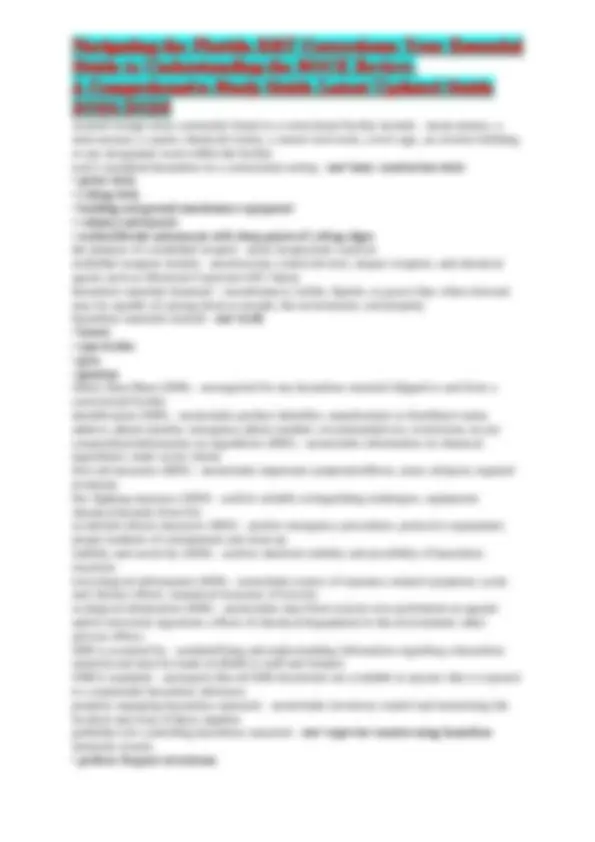
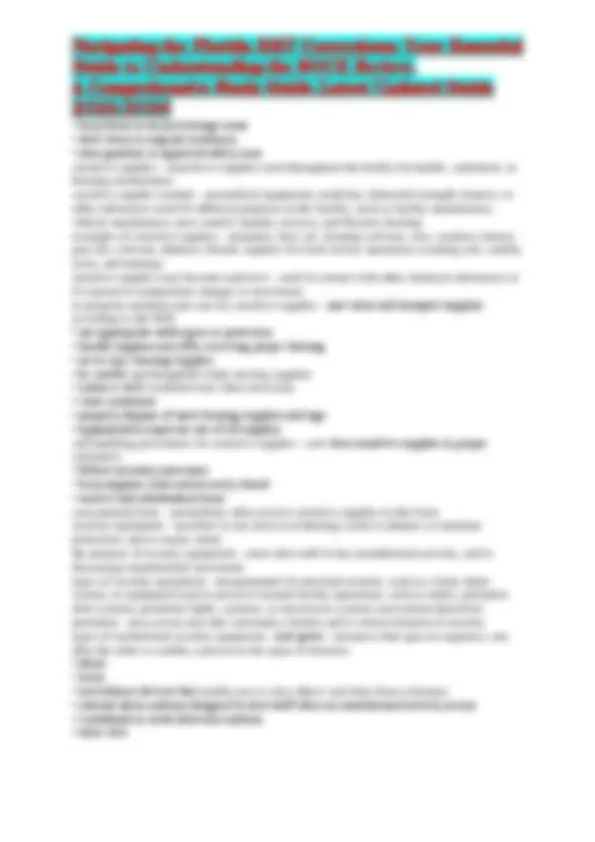
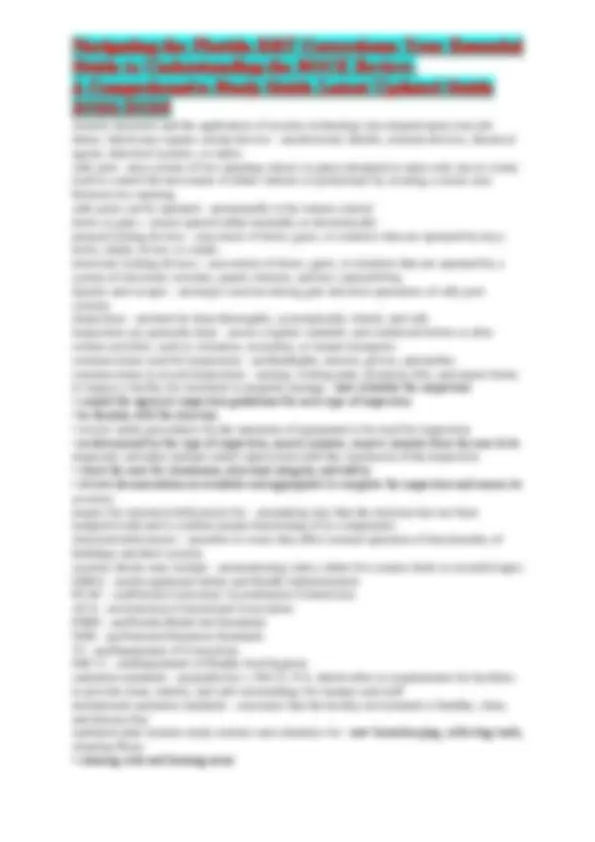
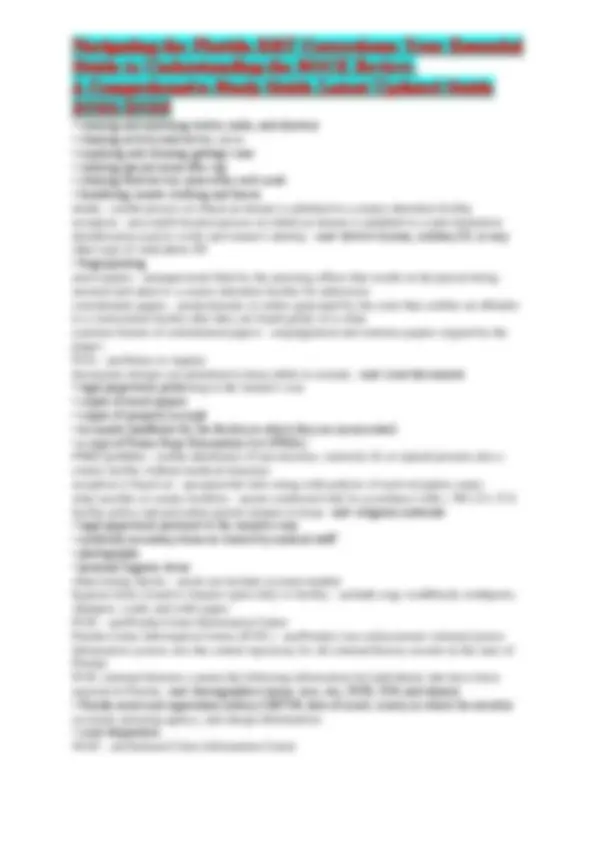

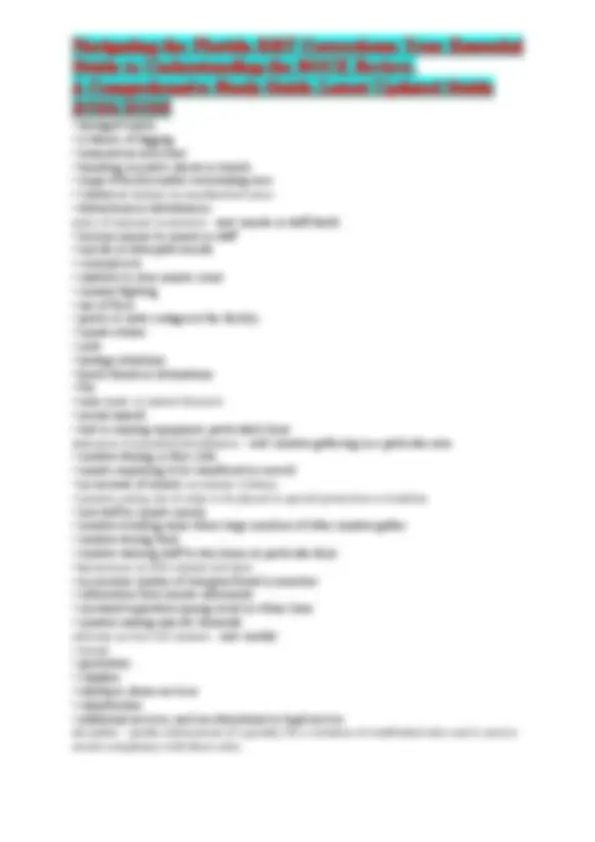
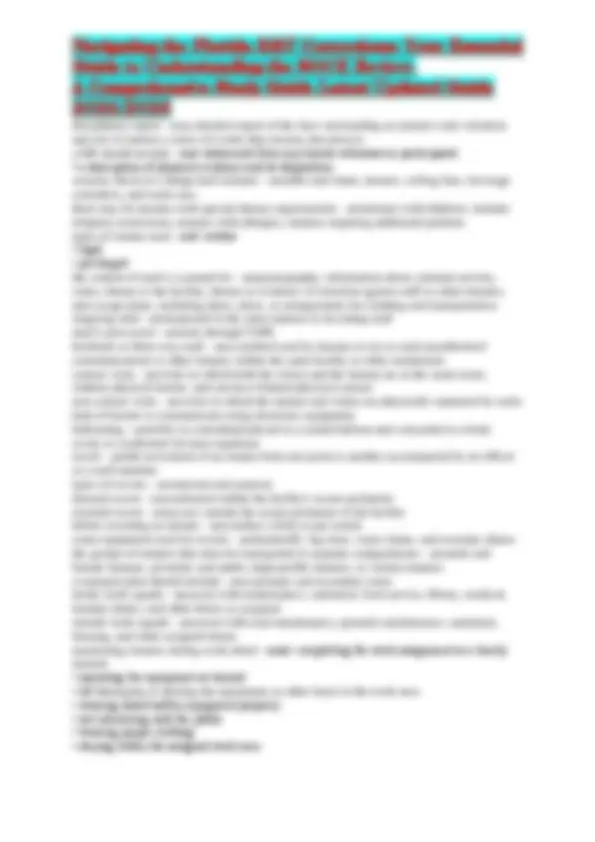
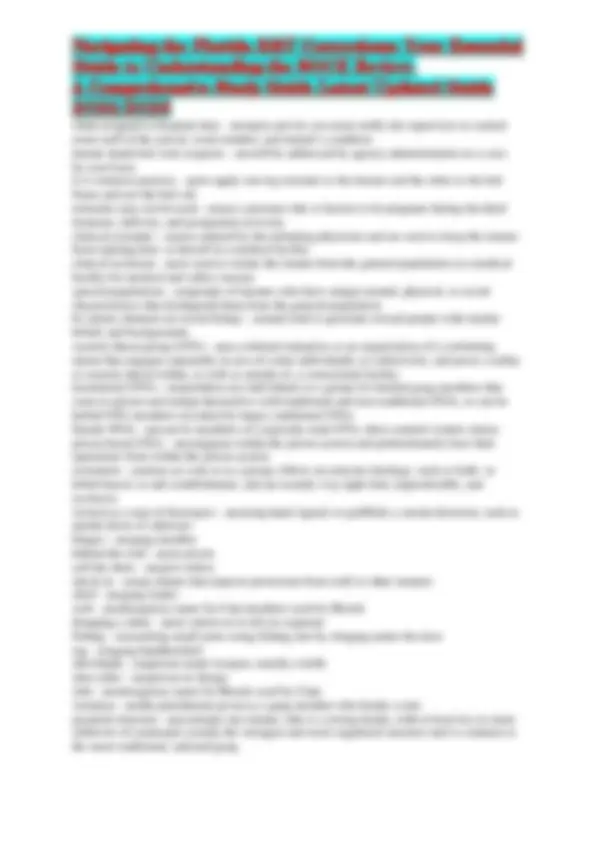
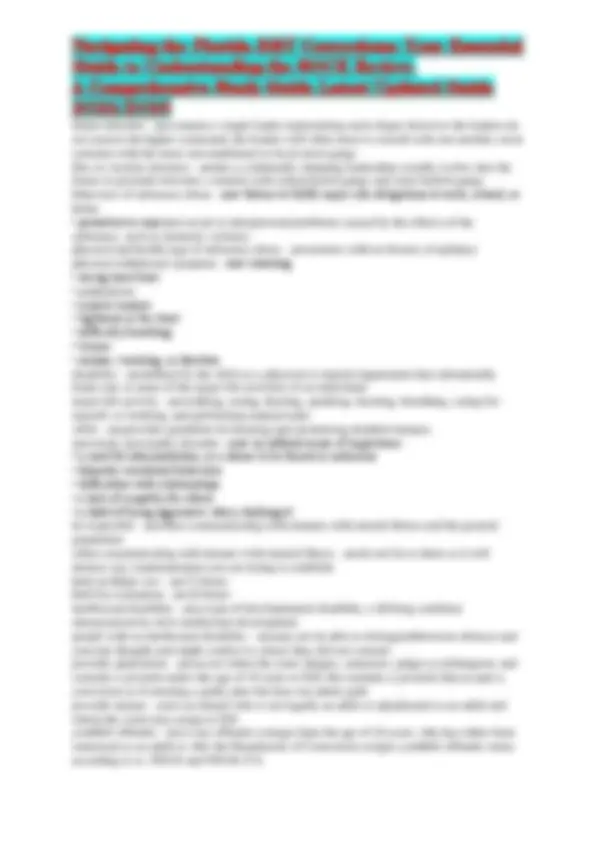
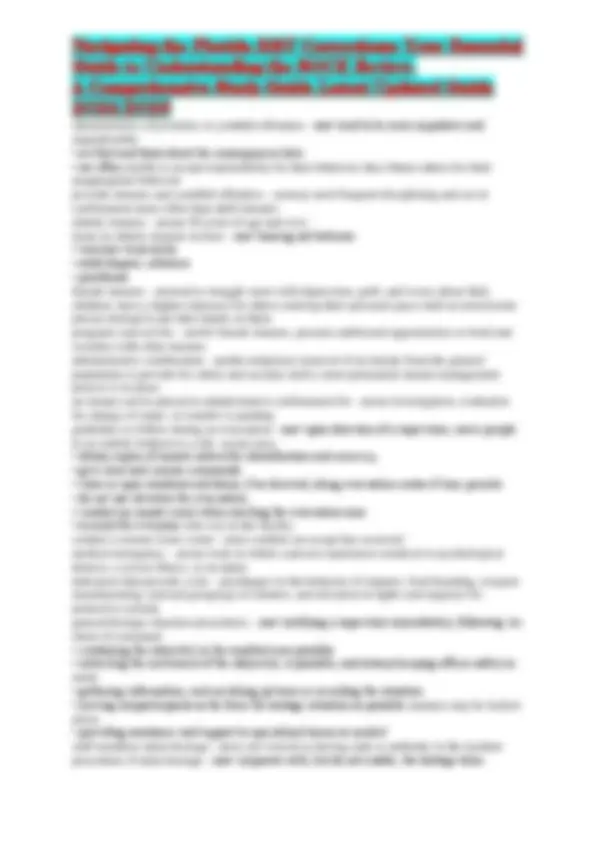
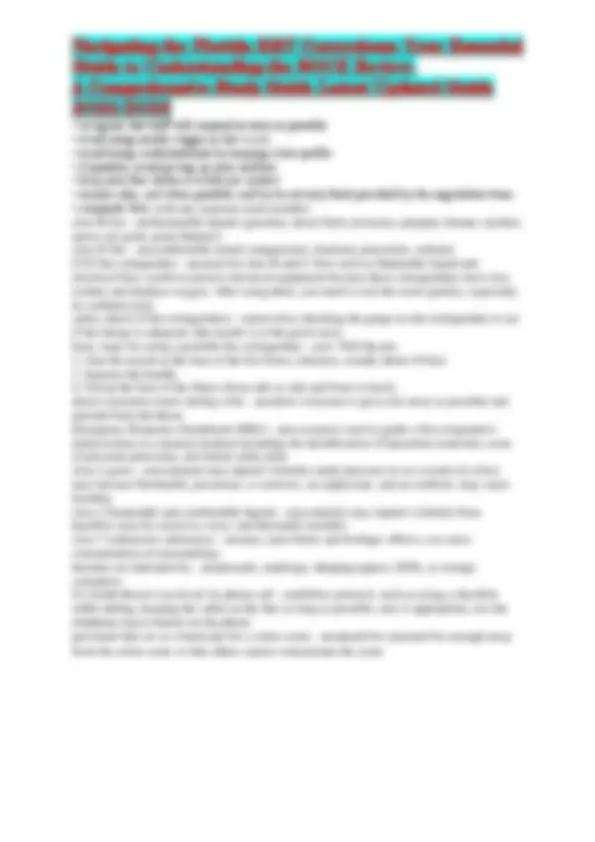


Study with the several resources on Docsity

Earn points by helping other students or get them with a premium plan


Prepare for your exams
Study with the several resources on Docsity

Earn points to download
Earn points by helping other students or get them with a premium plan
Community
Ask the community for help and clear up your study doubts
Discover the best universities in your country according to Docsity users
Free resources
Download our free guides on studying techniques, anxiety management strategies, and thesis advice from Docsity tutors
Navigating the Florida BRT Corrections: Your Essential Guide to Understanding the SOCE Review. A Comprehensive Study Guide Latest Updated Guide 2025/2026
Typology: Exams
1 / 28

This page cannot be seen from the preview
Don't miss anything!





















EMS system - ansa network of trained professionals linked to provide advanced, out-of- hospital care for victims of sudden traumatic injury or illness negligence occurs if all these conditions are present: - ans• duty to act - you had a legal duty to the patient
respiratory system - ansdelivers oxygen to and removes carbon dioxide from the blood; the nose, mouth, throat, voice box, and windpipe makes up the airway that brings oxygen to the lungs circulatory system - anspumps blood throughout the body; functions to deliver oxygen and nutrients to and remove waster from the body's tissues; basic parts are the heart, veins, capillaries, arteries, and blood the heart - ansconsists of two sides, each having an upper and lower chamber; right side pumps blood to the lungs, picks up oxygen, returns oxygenated blood to the left side and the left side delivers oxygenated blood throughout the body and returns blood to the right side blood vessels - ansa system of tubes through which blood flows
jacketed soft point - ansone-half to three-quarters of this lead bullet is jacketed with copper; the exposed lead on the flat nose allows for expansion upon impact. usually of high velocity, this bullet is designed for antipersonnel. the round easily penetrates interior walls and solid doors. environmental conditions - ansaffects the ammunition's shelf and duty life expectancy and may cause malfunctions when you use the cartridges accessory rail (semiautomatic pistol) - ansprovides space for lighting and sighting devices magazine catch (semiautomatic pistol) - ansreleases the magazine from the frame (magazine well) magazine floor plate (semiautomatic pistol) - ansbase of the magazine slide stop lever (semiautomatic pistol) - ansdevice that locks the slide in the open position thumb rest (semiautomatic pistol) - ansplace for the thumb to rest while gripping the pistol main parts of the magazine - ans• follower
charging handle (semiautomatic rifle/carbine) - ansenables manipulation of the bolt to chamber a round cover - ansanything that creates a bullet-resistant barrier between an officer and a threat concealment - ansany object or group of objects that causes a visual barrier between an officer and a threat but may not stop a projectile difference between cover and conceament - anscover is a bullet-resistant barrier and concealment is a visual barrier that may not stop a projectile passive resistance - ansa subject's verbal and/or physical refusal to comply with an officer's lawful direction, causing the officer to use physical techniques to establish control examples of passive resistance - ans• the subject refuses to move at the officer's direction
body cavity search - ansconducted by appropriate health services staff members in accordance with agency policies empty-hand strike to throat - ansconsidered deadly force methods of delivering strikes - ans• penetration
county jails - ansused for in-processing and temporary detention of defendants awaiting trial or disposition on federal or state charges and of convicted offenders sentenced to short-term detention (a year or less) county and municipal holding facilities - ansprovide a place for detainees while booking procedures are completed or until transported to a county jail treatment and evaluation centers - ansdesigned to meet the special needs of particular offenders; deal with alcohol/drug abusers or mentally ill offenders probation, parole, and community control - anspart of a community-based correctional system; their purpose is to supervise the enforcement of specific restrictions on individuals who may have received a suspended sentence after conviction or may be on parole juvenile assessment/ detention center - ansJuvenile suspects are taken to this center for processing and possible pretrial detention amendments of particular importance to correctional officers - ansfirst, fourth, fifth, sixth, and eighth first amendment - ansProtects the freedom of speech, press, the right to peaceful assembly, and religion. fourth amendment - ansprohibits unreasonable searches and seizures fifth amendment - ansprohibits self-incrimination sixth amendment - ansguarantees the right to a speedy and public trial, to counsel, to an impartial jury, to be informed of the nature of charges, and to confront witnesses eighth amendment - ansprohibits excessive bail and fines, and cruel and unusual punishment fourteenth amendment - ansexpanded the application of the Bill of Rights to state and local governments search - ansgovernmental intrusion into a place where a person has a reasonable expectation of privacy contraband - ansany unauthorized article or any authorized article in excessive quantities or altered from its intended purpose probable cause - ansa fair probability or reasonable grounds to believe that a crime was committed, based on the totality of circumstances (all the factors known at the time) seizure - ansthe act of taking possession of contraband or evidence for a violation of rule or law miranda warnings - ansprovide the protections of the fifth amendment right against self- incrimination when a suspect in custody is interrogated in a criminal investigation Health Insurance Portability and Accountability Act (HIPAA) - anssets privacy standards that make it a violation to knowingly disclose the protected health information of inmates and detainees Baker Act - ansprovides for emergency services and temporary detention for evaluation and voluntary or involuntary short-term community inpatient treatment, if necessary Prison Rape Elimination Act (PREA) - ansaddresses the problem of sexual abuse of persons in custody of federal, state, or local correctional agencies privileged communication - ansinformation held confidential within a protected relationship items defined as contraband - anscurrency or coins, tobacco products, controlled substances, nonprescribed drugs of any kind or nature, articles of food or clothing that have been altered or are in excessive quantity, firearms or dangerous weapons, cell phones or portable communication devices, or any items used to aid or effect an escape the purpose of limiting items in a correctional facility is - ansto maintain internal order, security, and discipline
introduction of contrband - ansis a crime punishable by s. 944.47, F.S. that designates the introduction, taking or sending of articles defined as contraband into a correctional facility as a felony offense criminal act - ansa violation of the law felony - ansany criminal offense punishable under Florida law by death or imprisonment in a state facility for more than one year misdemeanor - ansany criminal offense punishable under Florida law by imprisonment for one year or less in a county correctional facility basic elements necessary to convict a person of a crime - ans• proof that a crime has been committed
interview - ansa conversation between a correctional officer and an interviewee (inmate, visitor) with the goal of obtaining factual information purpose of interviewing - ansmay be used for conducting investigations, obtaining facts for incident reports, documenting routine activities, disciplinary actions, and use of force occurrences types of questioning techniques - ans• open-ended
inmate manipulation and deception can come in the form of an organized team consisting of - ans• observers
security measures and the application of security technology also depend upon your job duties, which may require certain devices - anselectronic shields, restraint devices, chemical agents, detection systems, or radios sally port - ansa system of two openings (doors or gates) designed to open only one at a time; used to control the movement of either vehicles or pedestrians by creating a secure area between two opening sally ports can be operated - ansmanually or by remote control doors or gates - ansare opened either manually or electronically manual locking devices - ansconsist of doors, gates, or windows that are operated by keys, locks, chains, levers, or cranks electronic locking devices - ansconsists of doors, gates, or windows that are operated by a system of electronic switches, panels, buttons, and key cardsy643wq injuries and escapes - ansmajor concerns during gate and door operations of sally port systems inspections - ansmust be done thoroughly, systematically, timely, and safe inspections are generally done - anson a regular schedule, and conducted before or after certain activities, such as visitation, recreation, or inmate transports common items used for inspections - ansflashlights, mirrors, gloves, and probes common items to record inspections - anslogs, writing pads, inventory lists, and report forms to inspect a facility for structural or property damage - ans• schedule the inspection